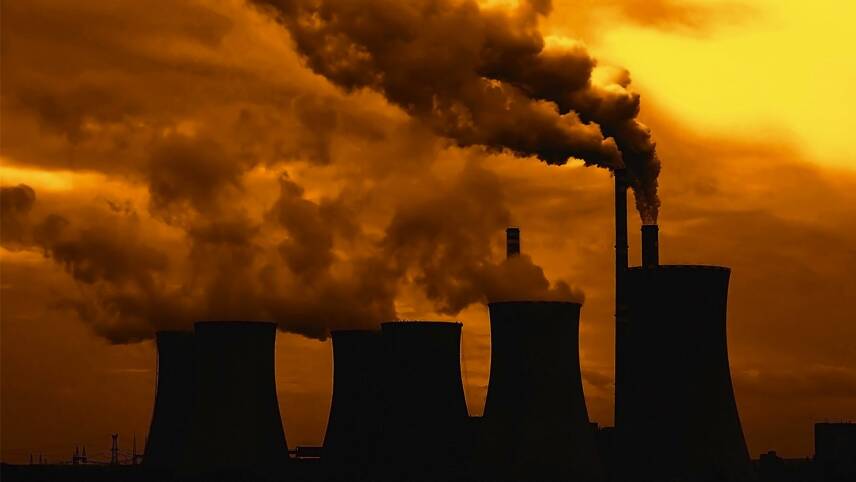Register for free and continue reading
Join our growing army of changemakers and get unlimited access to our premium content

Renewable power rose by 14% in 2022, slightly below the growth rate of 16% in 2021
The almost 3,000-page report was initially due to be published at 10am GMT today, but publication was delayed due to disputes over its exact wording, according to media reports. Disputes appear to be centred around the report’s discussions of fossil fuels, nuclear power and man-made carbon-negative technologies.
Following on from the IPCC’s previous work on the causes, extent and likely future impacts of global heating, this report focuses specifically on the solutions needed to cut emissions at scale. It reiterates the IPCC’s previous assertations that global net emissions will need to be reduced by 48% by 2030, against a 2019 baseline, and brought to zero by 2050 to achieve the Paris Agreement’s 1.5C trajectory. In this trajectory, the worst physical, social and economic impacts of the climate crisis are avoided.
Even in a 2C trajectory, global emissions will need to peak by 2025, be reduced by a quarter between 2019 and 2030, and reach net-zero no later than 2070.
To lay the groundwork for this level of emissions reductions, the report warns that the coming years are critical, with nations needing to go beyond their current Paris Agreement commitments. Investment in the shift to a low-carbon world will need to scale as much as sixfold and, beyond the energy transition, more funding is needed for low-carbon buildings, transport and food systems.
On the energy transition, the report warns that, if all new fossil fuel infrastructure that is currently in the pipeline is completed, the global temperature increase will breach 1.5C. A pathway of between 2.8C and 4C will be likely. This will be because the world will exceed its carbon and methane budgets, which are already mainly spent due to historic emissions.
The report calls for a phase-out of coal globally by 2050 and for international efforts to slash methane emissions 30% this decade. More than 100 countries have agreed to a ‘Global Methane Pledge’ with this 2030 goal as the headline target.
As expected, the report does place a major focus on solutions that can draw down carbon, including nature-based solutions like soil restoration and tree planting, and man-made solutions including direct air capture (DAC). It states that the best chance of guaranteeing a 1.5C future lies in going beyond net-zero and looking to net-negative emissions. However, it concludes that, without a rapid scaling-down of fossil fuels, these carbon-sequestering solutions will not be able to do enough to compensate for emissions in line with net-zero, let alone net-negativity.
Summarising the report’s headline recommendations, the co-chair of the working group behind the report, Professor Jim Skea, said: “It’s now or never if we want to limit global warming to 1.5C. Without immediate and deep emissions reductions across all sectors, it will be impossible.”
IPCC chair Hoesung Lee added: “The decisions we make now can secure a liveable future. We have the tools and know-how required to limit warming.”
Mitigating each tonne of emissions between now and 2030 will cost an average of $100 per tonne, the report states. It states that the cost is likely to gall post-2030 as green technologies scale. Crucially, it also states that the global economic benefit of limiting warming will exceed the cost of mitigation.
Areas in which the IPCC is promoting increased investment and stricter national and international targets include improving energy efficiency; scaling renewable and nuclear energy generation; scaling battery energy storage; ending deforestation; decarbonising transport; improving urban planning and transitioning to low-carbon systems in industrial and agricultural sectors.
On agriculture and transport, the report emphasises the importance of behaviour change at the consumer level as well as action from businesses and policy. It advocates for the uptake of electrified public transport and active transport at scale, as well as plant-based foods.
Report context
The report forms the third and final part of the IPCC’s sixth reporting cycle. In summary, the first part of the cycle looks at the causes of climate change and the second looks at the likely impacts. The third covers mitigation.
The first part was published last August and looked mainly at temperature forecasts, concluding that it is “more likely than not” that the global temperature increase will hit 1.5C by 2040. Current temperatures globally are, on average, 1.1C above pre-industrial temperatures.
The second part of the reporting cycle, published this February, explained exactly what the likely levels of temperature rise will mean in the coming decades, in terms of impacts on nature, society and the economy. UN Secretary-General Antonio Gutteres described the findings as an “atlas of human suffering”, with the report warning that warming above 2C would end the chance of a “liveable future” for more than three billion people.
According to the BBC, delays to the report were largely attributable to disagreements over the wording of recommendations around scaling down fossil fuels and scaling up nuclear. The decision-making process was one of the longest in the IPCC’s 34-year history.
More than 270 authors from 65 countries contributed to today’s report.

